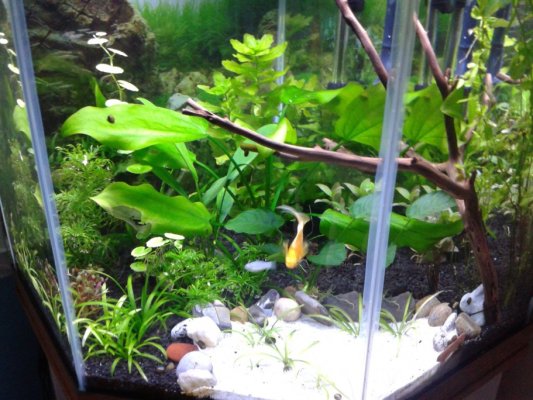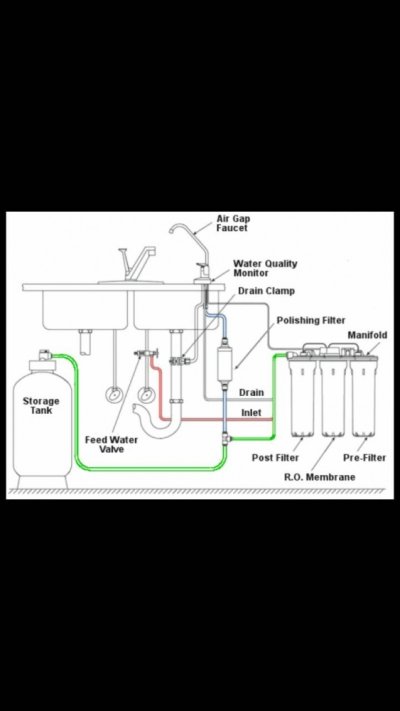So, I'm on a well and my hardness ppm is about 500, and because of the agricultural crops around me the fertilizer gets into the water causing nitrates to come into the tank, and they read 80-100 ppm (on the API master test kit). So I'm thinking I need to get an RO unit, so that I can actually have fish. My tank is medium-heavily planted, and the plants are doing great, but now I need to stock my tank with fish.
My questions are...
(1. How do you connect an RO system to your tank?
(2. What is "waste water"? And what do you do with it?
(3. How many GPD (Gallons Per Day) should there be for my 50 gallon tank? What ratio of tap, and RO should there be?
(4. Does the RO system go around the clock? Or part of the day?
FYI: I have looked into all the different methods of removing nitrate, and there is really no other way, for my tank, than to put clean water into my tank, to remove the nitrate. This has been an ongoing problem, as I live in an agricultural area, the nitrates in the fertilizer go into my well. My tank is not dirty and filthy from not cleaning it. My plants are beautiful and have been thriving for months, my tank is not dirty and filthy. I included a picture so you see what I mean. Also, the picture I put was from a while ago and my sag in the bottom left corner is all over the tank, now, and is 10 times as thick.
Thanks
My questions are...
(1. How do you connect an RO system to your tank?
(2. What is "waste water"? And what do you do with it?
(3. How many GPD (Gallons Per Day) should there be for my 50 gallon tank? What ratio of tap, and RO should there be?
(4. Does the RO system go around the clock? Or part of the day?
FYI: I have looked into all the different methods of removing nitrate, and there is really no other way, for my tank, than to put clean water into my tank, to remove the nitrate. This has been an ongoing problem, as I live in an agricultural area, the nitrates in the fertilizer go into my well. My tank is not dirty and filthy from not cleaning it. My plants are beautiful and have been thriving for months, my tank is not dirty and filthy. I included a picture so you see what I mean. Also, the picture I put was from a while ago and my sag in the bottom left corner is all over the tank, now, and is 10 times as thick.
Thanks


